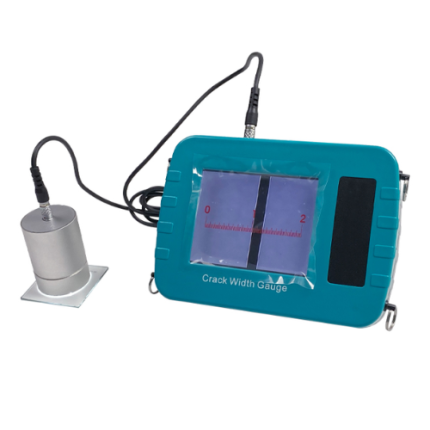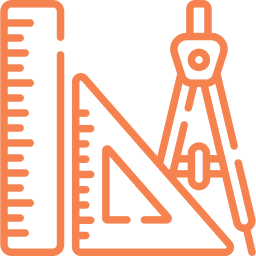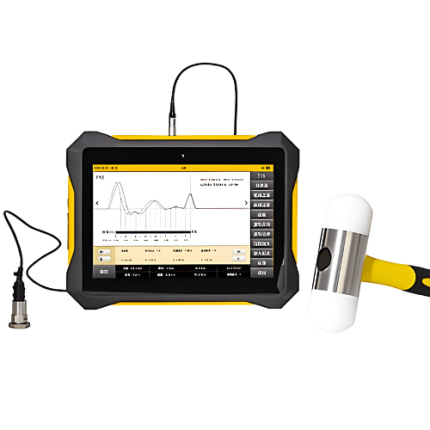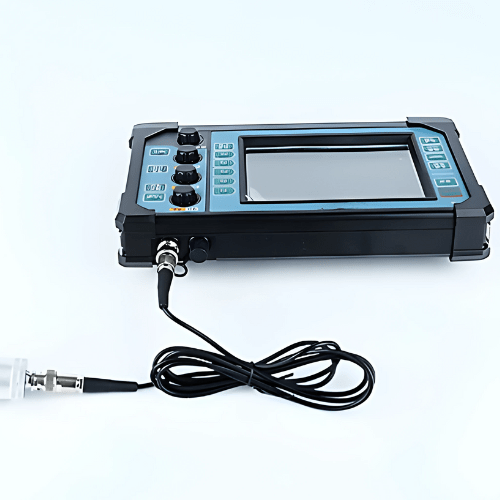Wireless Crack Width Monitors for Structural Health Insight
Capture and log crack movement data remotely with precision monitoring and wireless connectivity for real-time structural analysis


Crack Width Monitor with Wireless Data Logging
Monitoring crack width in structural elements is critical for identifying progressive damage, ensuring public safety, and maintaining infrastructure integrity. Crack width monitors with wireless data logging provide continuous, non-intrusive measurement of crack movement over time—offering real-time insight into structural behavior. These systems are ideal for remote or hard-to-access locations, reducing the need for manual inspections and minimizing human error. Tilt Deflection Angle offers advanced wireless crack monitoring systems purpose-built for modern infrastructure demands across North America. Our B2B solutions deliver reliable, cost-effective tools to engineers, contractors, and asset managers who need high-resolution data to support proactive maintenance and compliance. Whether monitoring bridges, buildings, tunnels, or dams, our wireless crack width monitors integrate seamlessly into existing monitoring networks and IoT platforms.
Core Components of Crack Width Monitors
In addition to offering products and systems developed by our team and trusted partners for Crack Width Monitor with wireless data logging, we are proud to carry top-tier technologies from Global Advanced Operations Tek Inc. (GAO Tek Inc.) and Global Advanced Operations RFID Inc. (GAO RFID Inc.). These reliable, high-quality products and systems enhance our ability to deliver comprehensive technologies, integrations, and services you can trust. Where relevant, we have provided direct links to select products and systems from GAO Tek Inc. and GAO RFID Inc.
Hardware
- Mounting Assemblies – GPS IoT Tracking Accessories secure high-accuracy modules to vulnerable surfaces on insured assets.
- High-resolution IR Strain Mapping Cameras (optional) – Chemical and Gas Sensors can be paired to detect stress-related chemical emissions on damaged industrial sites.
- Crack Mapping via ToF and IR combo – NFC & HF RFID Readers, Tags & Accessories enable mobile tap-to-read verification of digital damage markers.
- Sub-millimeter Alignment Clamps – LF RFID Readers, Tags & Accessories assist in tracking displacement sensor orientation for insurance compliance.
- Wi-Fi/Bluetooth Transmission Boards – Wi-Fi HaLow End Devices maintain consistent connectivity across dense finance campus infrastructure.
Software
- Local Data Logging Software
Onboard memory stores data even during network outages for future synchronization. - Dashboard Interface
Access real-time crack width data, historical trends, and customizable alerts through cloud-based or local platforms. - Firmware Configuration Tools
Remotely set measurement intervals, reporting frequency, and alert thresholds.
Cloud Services
- Secure Data Storage
Encrypted cloud servers store data for ongoing analysis and compliance archiving. - Analytics Engine
Detects patterns, calculates rates of crack propagation, and supports predictive maintenance models. - Multi-User Access
Role-based permissions allow engineers, facility managers, and inspectors to collaborate efficiently. - Alert & Notification Services
Send automated email or SMS alerts when crack movement exceeds predefined safety margins.
Key Features & Functionalities
- Continuous Monitoring - Collects crack movement data 24/7 without human intervention.
- Wireless Data Transmission - Easily deployable without complex wiring, ideal for retrofit and remote projects.
- High-Accuracy Measurement - Measures to sub-millimeter accuracy, suitable for sensitive structural zones.
- Environmental Tolerance - Weatherproof design ensures reliable operation in outdoor, humid, or dusty conditions.
- Data Redundancy - Local logging prevents data loss during network outages or gateway failures.
- Low Maintenance Requirements - Long battery life and durable design reduce service calls and operational costs.
Benefits
- Proactive Risk Mitigation - Enables early detection of crack propagation before critical failure occurs.
- Reduced Inspection Costs - Minimizes the need for routine manual crack gauges and visual inspections.
- Improved Safety Compliance - Helps maintain compliance with structural safety codes and monitoring standards.
- Historical Recordkeeping - Long-term data archives support forensic analysis and maintenance planning.
- Rapid Deployment - Wireless setup with minimal tools allows fast installation on active or aging infrastructure.
Applications
- Monitoring crack growth in concrete and masonry structures
- Post-seismic assessments of buildings and infrastructure
- Tunnel lining or shaft wall displacement
- Structural joint movement tracking
- Retaining wall stability analysis
- Dams and levee crack propagation monitoring
- Industrial facility maintenance and safety audits

Industries
- Civil & Structural Engineering
- Transportation Infrastructure
- Energy & Utilities
- Public Works & Government
- Water Management & Environmental Engineering
- Construction & Building Management
- Mining & Geotechnical Services
Integrations & Compatibility
- Supports integration with major IoT platforms such as AWS IoT Core, Azure IoT Hub, and Google Cloud IoT
- Compatible with SCADA and GIS systems via RESTful APIs or Modbus protocol
- Direct export options to Excel, JSON, or CSV for offline analysis
- Seamless integration into multi-sensor structural health monitoring systems

Relevant U.S. & Canadian Industry Standards
- ASTM C876 (U.S.)
- ACI 228.2R-13 (U.S.)
- ANSI/ASCE/SEI 41-17 (U.S.)
- CSA A23.3-19 (Canada)
- CAN/CSA-S6-19 (Canada)
Case Studies
Case Study – U.S.: Bridge Crack Monitoring in Pennsylvania
A transportation department in Pennsylvania installed wireless crack width monitors on a highway overpass. The system transmitted real-time data on crack movement to a central dashboard, enabling daily reviews and faster response times. Alerts helped avoid emergency shutdowns by flagging deteriorating conditions early.
Case Study – U.S.: Structural Crack Tracking in California Parking Garage
An engineering firm in California used Tilt Deflection Angle’s wireless crack monitoring systems during the seismic retrofitting of a multi-story parking garage. The sensors monitored concrete slab cracks throughout the retrofit, ensuring crack activity remained within acceptable thresholds and streamlining compliance reporting.
Case Study – Canada: Tunnel Infrastructure in British Columbia
In a major infrastructure project near Vancouver, crack width sensors were installed in an aging transit tunnel to track water-induced crack expansion. The data collected supported predictive maintenance and helped allocate resources efficiently during heavy rainfall months.
Ready to monitor structural cracks with precision and confidence?
Contact us today to learn how Tilt Deflection Angle can help you deploy wireless crack width monitoring systems tailored to your infrastructure needs.
